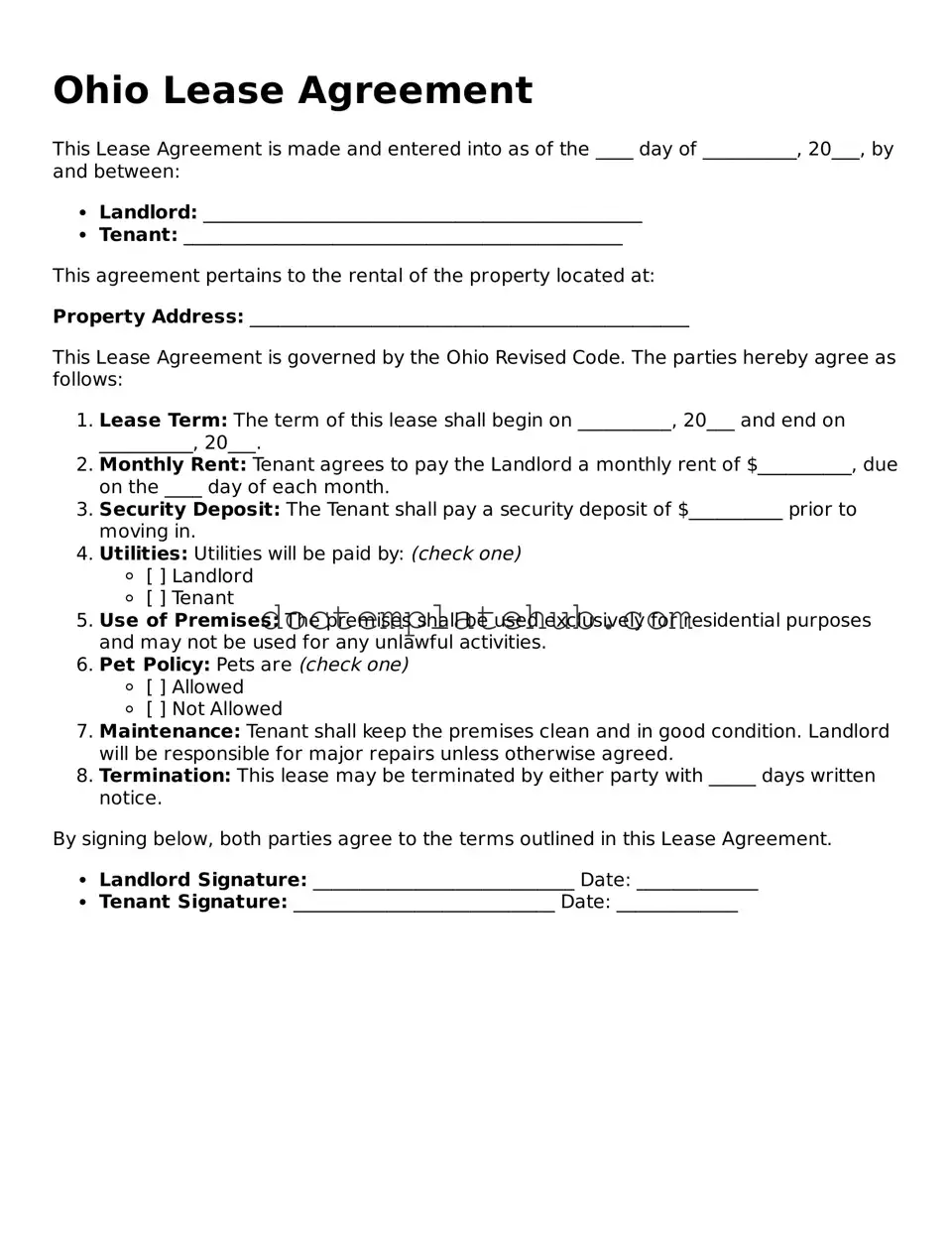What is an Ohio Lease Agreement?
An Ohio Lease Agreement is a legal document that outlines the terms and conditions between a landlord and a tenant for renting residential or commercial property in Ohio. This agreement specifies the rights and responsibilities of both parties, including rent amount, duration of the lease, and maintenance obligations.
What are the key components of an Ohio Lease Agreement?
Key components typically include the names of the landlord and tenant, property address, lease term (start and end dates), rent amount and payment schedule, security deposit details, maintenance responsibilities, and any rules or restrictions regarding the property. It may also cover termination conditions and procedures for resolving disputes.
How long is a typical lease term in Ohio?
Lease terms in Ohio can vary widely. They may be month-to-month, six months, or one year. Some leases can extend beyond one year. The duration is usually agreed upon by both the landlord and tenant and should be clearly stated in the lease agreement.
Can a landlord increase rent during a lease term in Ohio?
Generally, a landlord cannot increase rent during the lease term unless the lease agreement includes a provision allowing for such increases. For month-to-month leases, landlords must provide proper notice, typically 30 days, before implementing any rent increase.
What happens if a tenant wants to break the lease early?
If a tenant wishes to break the lease early, they may face penalties as outlined in the lease agreement. Common consequences include forfeiting the security deposit or being responsible for rent until a new tenant is found. It's advisable for tenants to communicate with the landlord to discuss potential options.
Is it necessary to have a written lease agreement in Ohio?
While oral agreements can be legally binding, it is highly recommended to have a written lease agreement in Ohio. A written document provides clarity and protects both parties by outlining specific terms and conditions. It also serves as evidence in case of disputes.
